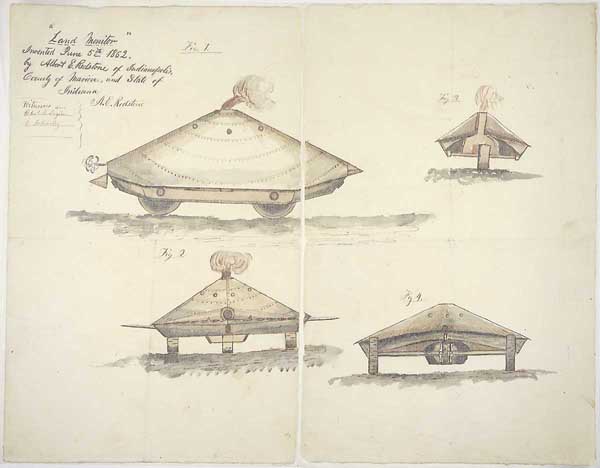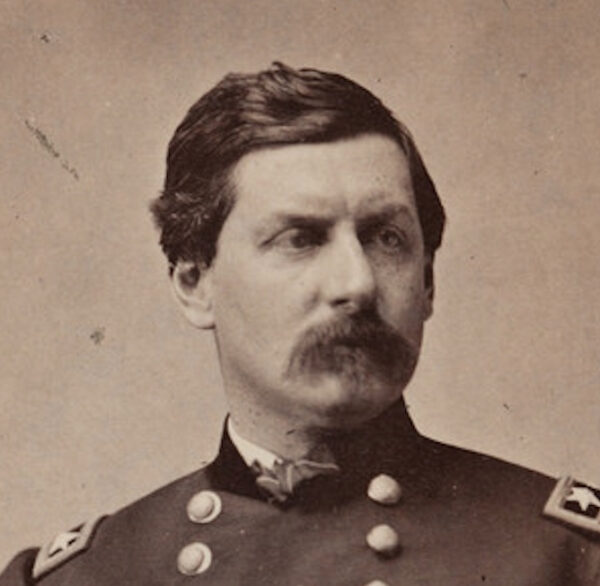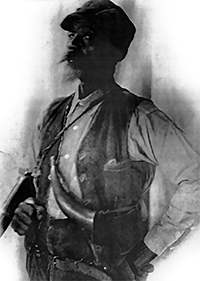 National Archives
National ArchivesSketches of Albert E. Redstone’s proposed “Land Monitor,” which he submitted to the War Department in an unsuccessful bid to gain federal support for the project.
In its November 15, 1862, issue, the editors of The Scientific American reprinted a report from the Western Railroad Gazette about an Indiana inventor, Albert E. Redstone. Earlier that year, Redstone had pitched the War Department on a new military machine dubbed a “Land Monitor.” Redstone promised that his machine—which will look to modern viewers like a rudimentary tank—would revolutionize land warfare just as the creation of ironclad warships like USS Monitor had recently done for naval combat. The War Department, however, wasn’t swayed by his lofty promises, and the project was never built. Below is the article about Redstone and his proposal that ran in The Scientific American:
Mr. Redstone, of Indianapolis, proposes to build, for Government, 9 “Land Monitors,” or “engines of war,” to cost $900 apiece, to weigh 1,800 lbs. each, 25-horse engine and all, with coal, water, ammunition, knives, &c. including the above weight; each to be handled by two men; to discharge from each 10,000 shots in half an hour; to be capable of running twenty miles an hour over any grade less than 45 [degrees], to be perfectly manageable in turning, climbing or descending; to clear more obstructions from artillery roads than 500 men; to reap the rebels clear by divisions; to resist canister, grape and small shot. The inventor (Mr. Redstone) says: “I propose to engineer the advance car myself; to risk all the Government can risk—my life—each man in the nation can only do this. I also propose to furnish patterns of the engine, free of cost, on our plan. Now, if any doubt my ability to accomplish the above, I refer them to what I have accomplished in mechanical invention. If any doubt my sincerity, I only answer I have too deep sympathy for the cause of my country to propose anything I am not willing to execute.”
Related topics: technology, weapons




